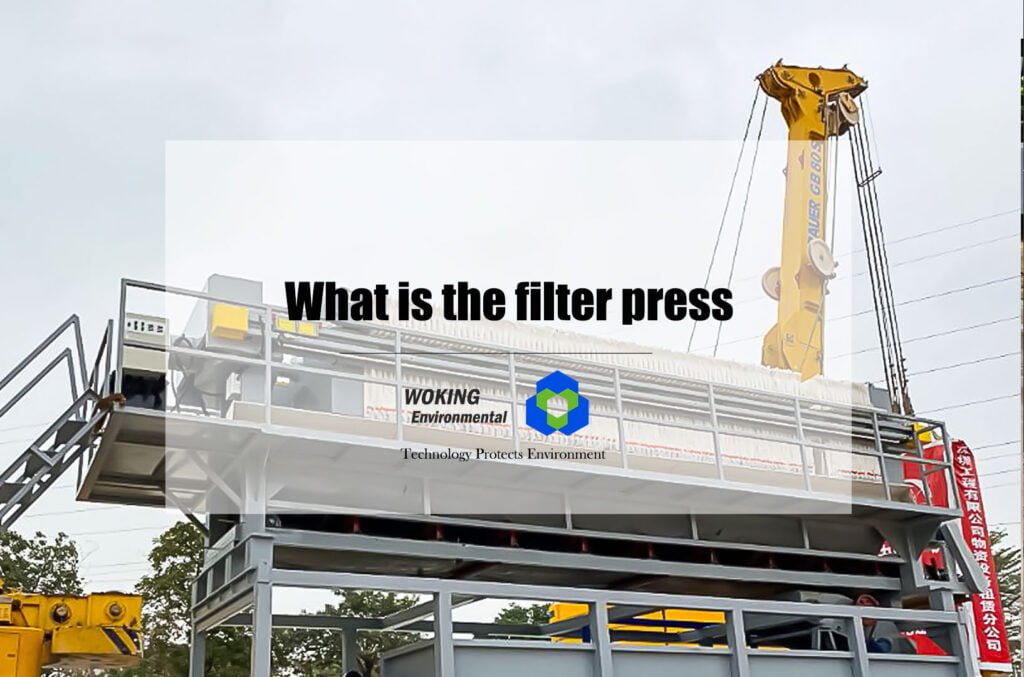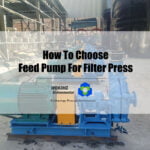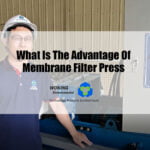A filter press is a device used for solid-liquid separation in which a slurry is pumped into a series of chambers, each containing a filter medium such as a filter cloth or paper. The liquid component of the slurry (the filtrate) passes through the filter medium and exits the press, while the solid component (the filter cake) is retained within the chamber.
The filter press typically consists of a series of plates and frames, which are clamped together to form a series of chambers. Each chamber is filled with the slurry and then the filter medium is used to separate the solids from the liquid. The solids are trapped in the chambers, and the filtrate is collected in a separate container for further processing or disposal.
Filter presses are used in a wide range of industries including chemical, pharmaceutical, food and beverage, mining, and wastewater treatment. They are typically used for applications where a high degree of solid-liquid separation is required and where large volumes of slurry need to be processed efficiently.
Types of Filter Press:
- Plate and Frame Filter Press
Plate and frame filter press consists of a series of plates and frames with filter cloths between them. The liquid to be filtered is pumped into the press and passes through the filter cloth, leaving behind the solid material on the cloth. The filter plates and frames are then separated, and the solid material is removed. - Chamber Filter Press
Chamber filter press is similar to plate and frame filter press, but the plates have a chamber where the solid material is collected, and the filter cloths are located on both sides of the chamber. The liquid is pumped into the press and passes through the filter cloth, leaving behind the solid material in the chambers.
- Membrane Filter Press
Membrane filter press is a type of chamber filter press with additional membranes that squeeze the filter cake to reduce the moisture content. The membrane is inflated with compressed air or water, and the pressure is increased to squeeze the filter cake.
- Fast Open Filter Press
Fast open filter press is a type of chamber filter press with a quick-opening mechanism for fast and easy removal of the filter cake. The filter plates are opened and closed quickly, reducing the time and effort required for cake removal. - Overhead Filter Press
Overhead filter press is a type of filter press with the filter plates suspended from an overhead beam. The plates are lifted and lowered using hydraulic cylinders, allowing for easy access to the plates for cleaning and maintenance. - Vertical Filter Press
Vertical filter press is a type of filter press with the filter plates arranged vertically. The liquid to be filtered is pumped into the press and passes through the filter cloth, leaving behind the solid material on the cloth. The filter plates are then separated, and the solid material is removed.
Working Principle
The hydraulic pressing mechanism of the filter press is composed of a hydraulic station, an oil cylinder, a piston, a piston rod, and the structure of the Hafnian card hydraulic station connecting the piston rod with the pressing plate. The structure of the Hafnian card hydraulic station includes an electric motor, an oil pump, a relief valve (pressure regulation), a reversing valve, a pressure gauge, an oil circuit, and an oil tank.
Filtration Mode: The filtration of the filter press can be divided into clear flow filtration and dark flow filtration. In clear flow filtration, a water nozzle is installed above the liquid outlet hole of each filter plate, and the filtered liquid flows out intuitively from the water nozzle. In dark flow filtration, each filter plate has an outlet channel hole, and the outlet holes of several filter plates are connected to form an outlet channel, which is discharged by a pipeline connected to the outlet hole under the stop plate.
Washing Mode: When the filter cake needs to be washed, there are sometimes one-way washing, two-way washing, one-way dark washing, and two-way dark washing.
Working Process:
The working process of a filter press involves several steps:
- The slurry is pumped into the press and fills the chambers or spaces between the plates and frames.
- The feed pump is turned off, and the hydraulic system is activated to close the press and apply pressure to the slurry.
- The filtrate passes through the filter medium and is collected in a separate container.
- The solid component of the slurry is retained within the chamber or on the filter medium, forming the filter cake.
- The press is opened, and the filter cake is removed for further processing or disposal. The cycle is then repeated.
Technical Parameters
Performance parameters
Filter area (m2): represents the maximum processing capacity of the filter press per unit of time.
Filter plate size (mm): the size of the filter plates used in the filter press.
Filter plate thickness (mm): the thickness of the filter plates.
Filter cake thickness (mm): the thickness of the filter cake formed during the filtration process.
Number of filter chambers: the number of filter chambers in the filter press.
The theoretical volume of each filter chamber (L) or (m3): the theoretical volume of each filter chamber in the filter press.
Overall dimensions of the machine (length x width x height) (mm): the overall dimensions of the filter press.
Foundation dimensions (mm): the foundation dimensions required for the installation of the filter press.
Working pressure of filter chamber (MPa): the maximum pressure applied during the filtration process.
Motor power (KW): the power of the motor used in the filter press.
Total weight of the machine (KG): the total weight of the filter press.
Performance of the filter plates:
Filter plate structure: including plate and frame type and box type filter plates, etc.
Filter plate material: can be made of stainless steel, cast iron, rubber, reinforced polypropylene (plastic), and high molecular weight polyethylene, etc.
Other performance: such as acid and alkali resistance, filtration temperature (℃), filtration pressure (MPa), etc.
Functional configuration:
Pressing method: can be manual pressing, motor pressing, automatic hydraulic pressing, automatic pressure holding, etc.
Control method: can be electrical control, computer program control, etc.
Plate pulling method: can be automatic plate pulling, manual plate pulling, etc.
Feeding method: can be center feeding, corner feeding, top center feeding, etc.
Liquid discharging method: can be clear liquid discharge or dark liquid discharge, etc.








